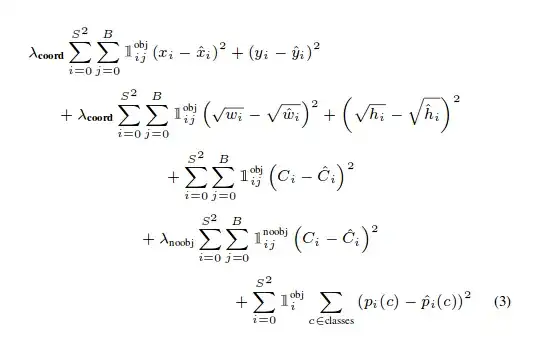I'm trying to work on a Yolo implementation which searches a 19x19 grid to find a specific item. There is only a single class in all of these images I am looking to get bounding boxes for. I'm a little confused about the calculation of the loss function though.
The output from my CNN is a 19x19x5 matrix (P , x , y , w , h), with P being the probability that an object is located in this frame.
The way I've interpreted this function is as follows: - Add the sum of squares of the x and y coordinates from true and pred - Multiply by 1 if the ground truth object is present, otherwise 0 - Multiply by 5 to increase the loss from bounding boxes
-repeat this with the sum of squares of the square root of w and h
Here is the part that confuses me now. Since I do not have any classes, only a probability of object being in this frame, I'm not sure how to account for this.
Should I treat C as equal to P, and simply take the sum of squares as: 1obj (Pi - Ptruei) + 0.5* 1noobj (Pi-Ptruei)
My guess is that if the object is located in that cell, this loss function would penalize localization error to a greater extent. Whereas if there are no objects, it will penalize the probability of the object.
